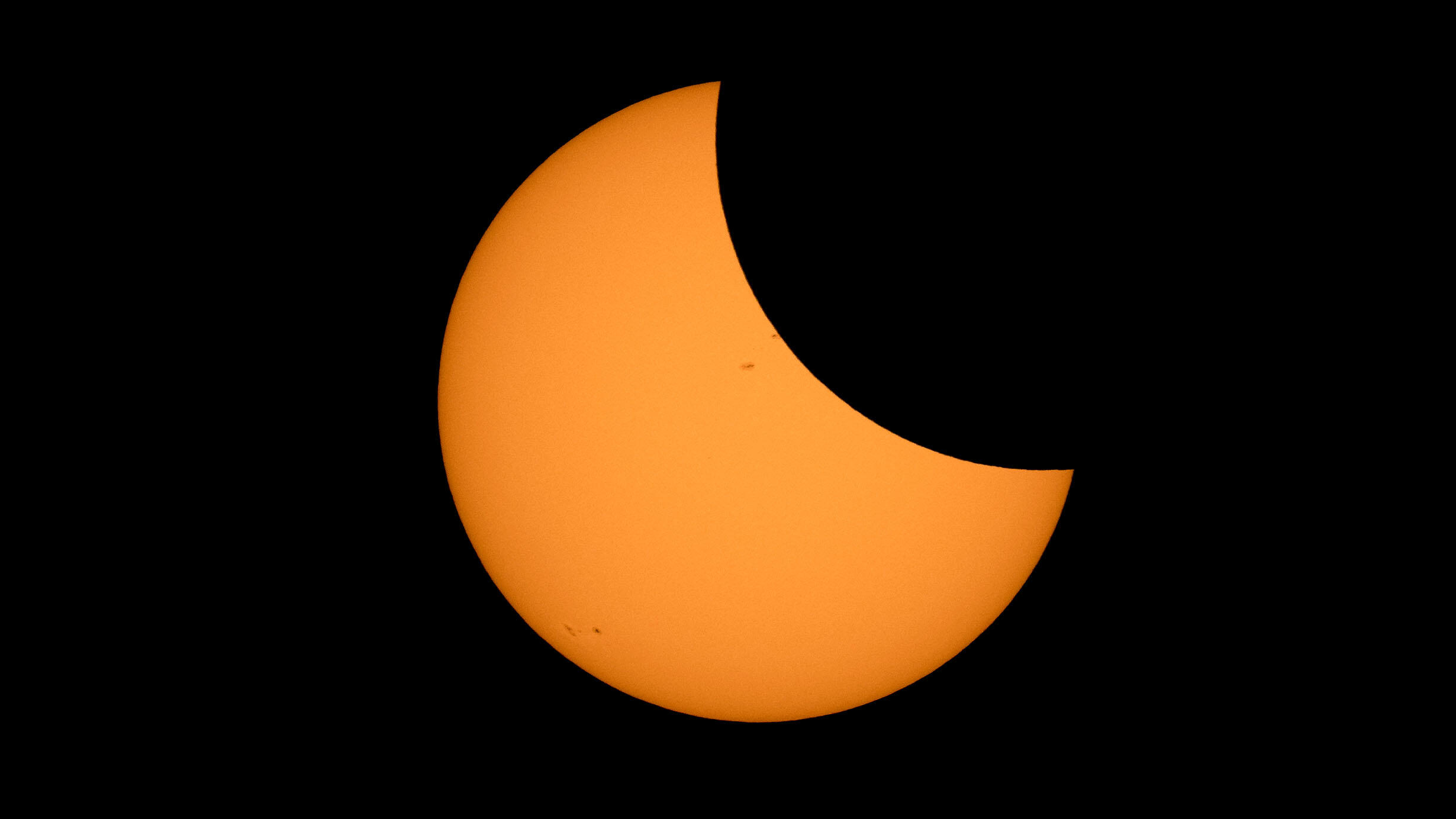 The Moon is seen passing in front of the Sun during a solar eclipse from Ross Lake, Northern Cascades National Park, Washington on Monday, Aug. 21, 2017.
The Moon is seen passing in front of the Sun during a solar eclipse from Ross Lake, Northern Cascades National Park, Washington on Monday, Aug. 21, 2017.Get ready for the June 10 “ring of fire” solar eclipse with Museum astrophysicist Jackie Faherty and planetary scientist Marina Gemma.
Using the OpenSpace visualization software, blast off into space to investigate our Sun-Earth-Moon system and witness the shadow of the Moon as it journeys across the globe. Viewers will fly around a 3D map of New York City to get a virtual show of what this sunrise partial eclipse will look like if you are in the area.
Special guest appearance by Neil deGrasse Tyson, astrophysicist and the Frederick P. Rose Director of the Hayden Planetarium.
Bring your burning eclipse questions for experts to answer in the live chat and even live on screen:
Watch a recording of the livestream below, first aired on June 4, 2021. Or check out the complete playlist of Astronomy Online events.
How to Make a Solar Eclipse Projector
1) Find two pieces of stiff white cardboard, two paper plates, or two pieces of paper.
2) Make a tiny hole in the middle of one of those paper pieces by using a pin or thumbtack.
3) With your back towards the Sun, hold the piece with the pinhole above your shoulder, allowing the Sun to shine through the opening. Your second piece of paper or cardboard will act as a screen to project the image of the Sun.
4) Hold the screen paper at arm's length from the pinhole paper and position it so you can see the inverted image of the Sun projected.
5) To make the Sun's image larger, hold the screen paper farther away from the pinhole paper.
Stay in the loop for more upcoming events—sign up for our newsletter.